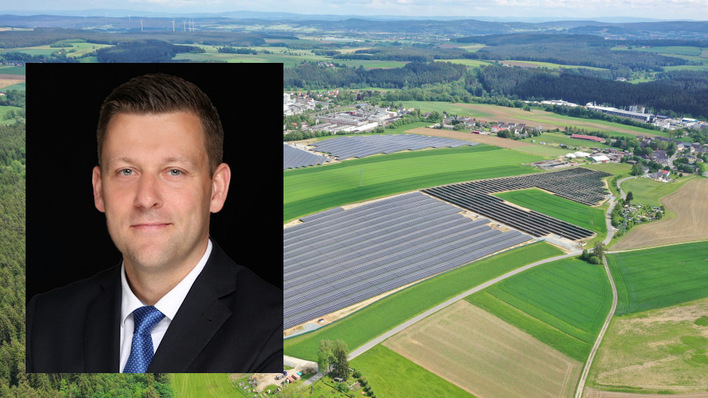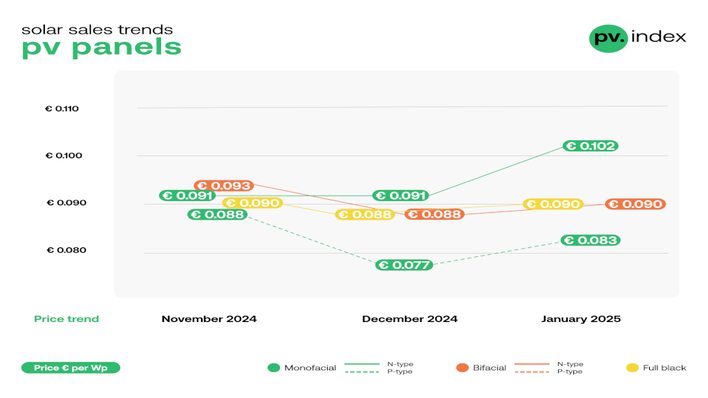Many people and investors want to invest their money for a sustainable and climate-neutral future, and a growing number of providers and companies are advertising green and sustainable investment opportunities. How big is this market and how much has it grown in recent years?
Globally, there is a statistic that counts all investments that in some way meet so-called ESG factors, i.e. environmental, social and good governance (ESG). But they have very different products in there, some that apply very high standards and others that, for example, only exclude the tobacco sector and do nothing else. According to these statistics, every third dollar worldwide is invested according to ESG criteria. But I would not classify every investment counted there as a sustainable investment. For the German fund sector, the proportion is somewhat lower according to the statistics of the Forum Nachhaltige Geldanlagen. I myself always do the statistics for Switzerland, where we recently had a market share of around 50 percent for the mutual fund sector. The trend in sustainable investments is clearly upward in all statistics, whether globally or for Germany and Europe. We have consistently seen growth rates of over 30 percent. In any case, the market for sustainable investments is growing faster than the normal investment market.
Is the risk of greenwashing also increasing as a result of the strong growth in the market for sustainable investments? Are there any reliable data or statistics on how widespread greenwashing is?
I don't know of any statistics on this. But if you take a closer look at the market and specific products, it becomes clear relatively quickly that greenwashing exists, and not just for individual cases, but for a wide range of products. For example, funds say we are doing so-called ESG integration, meaning that ESG factors are taken into account in the investment decision. But the asset managers don't say exactly how they do that, what that means exactly. Are any sectors excluded or are investments only made in pioneering companies in terms of climate change? Overall, this often remains nebulous. But then there are also cases where companies are unfairly denounced for alleged greenwashing, whether by NGOs or the media. Ultimately, that's always the case when you say, as a green investor, I don't want to invest in dirty industries like oil. But if you invest sustainably, that's exactly how you invest in such companies, that's always the accusation. Sure, there are funds that do exactly that, they just have the green mantle. But quite often, for very pragmatic reasons, you have to define sales thresholds, for example, for the exclusion of oil or coal. Here, a revenue threshold of 5 percent is usually defined. Why is this done? Large corporations generally all have something to do with oil or gas, for example in the field of energy supply. So if very rigorous criteria were applied here, almost no one would invest any more. That's why it has become established that certain sales thresholds are set. In my view, if this is communicated transparently, the greenwashing accusation can no longer be sustained.
How can you distinguish between greenwashing and genuine sustainability? Do you have a few basic tips for investors on this?
First of all, there is always the possibility for investors to do their own research. However, you have to do more work on it and you need good know-how. Therefore, this route is probably not viable for the typical small investor. But there are several other options. One is to invest in a thematic fund, such as a renewable energy fund in the area of climate change. In this case, I can be relatively sure that there are companies there that provide the relevant technologies or build wind and solar parks. However, you don't have a broadly diversified portfolio, but rather invest in one sector or one technology, which can also be financially risky. On the other hand, you can get information from Stiftung Warentest, which regularly produces analyses and makes recommendations. Another option is to rely on seals, for example, for the German-speaking countries, the FNG seal from the Forum Nachhaltige Geldanlagen. Funds can apply for this after a relatively strict selection process.
So the crucial thing is that my green investment actually leads to a concrete reduction in emissions or to a real positive effect for the climate, people and the environment?
In the final analysis, yes. The crucial factor here is additionality. If, for example, I as a small investor invest specifically in the shares of pioneering companies via a sustainable ETF fund, this may make sense. After all, I am investing in companies that already have a very good impact. But this does not lead to concrete additional C02 savings in every case. If I want to do that, I have other options. For example, if I invest in a fund that is specifically raising money to build a new solar or wind farm, I am actively participating in it. Because this wind farm is not yet up and running, and I invest x percent, thereby making an active contribution to saving additional CO2 in the future. That is a completely different dimension of impact investment. However, with such investment models, you should always consider how risky they are financially. That's another matter.
Did you miss that? Investments in renewable energies reach record level
When investing in truly sustainable projects, do you have to lower your return expectations from the outset?
You can't make that general statement. Ultimately, it's the same as with any investment. You can always be lucky and the investment is highly profitable, the companies grow and you exceed the average market return. But you can also be unlucky with a conventional investment in the sense that it is not profitable. The same is true for sustainable investments. We know that from the water sector, for example. These thematic funds have always outperformed the market in the past, they have always outperformed the market interest rates. The same is not true for others.
Did you miss that? New report shows potential for photovoltaics in Africa
There are certainly products in the spectrum of sustainable investment opportunities that per se have lower interest rates than the market, for example in the microfinance area. But I wouldn't say that green or sustainable investments are only possible by sacrificing returns. Empirical evidence tells us otherwise, namely that sustainable investments sometimes perform better than others, but not much worse.
The interview was conducted by Hans-Christoph Neidlein









